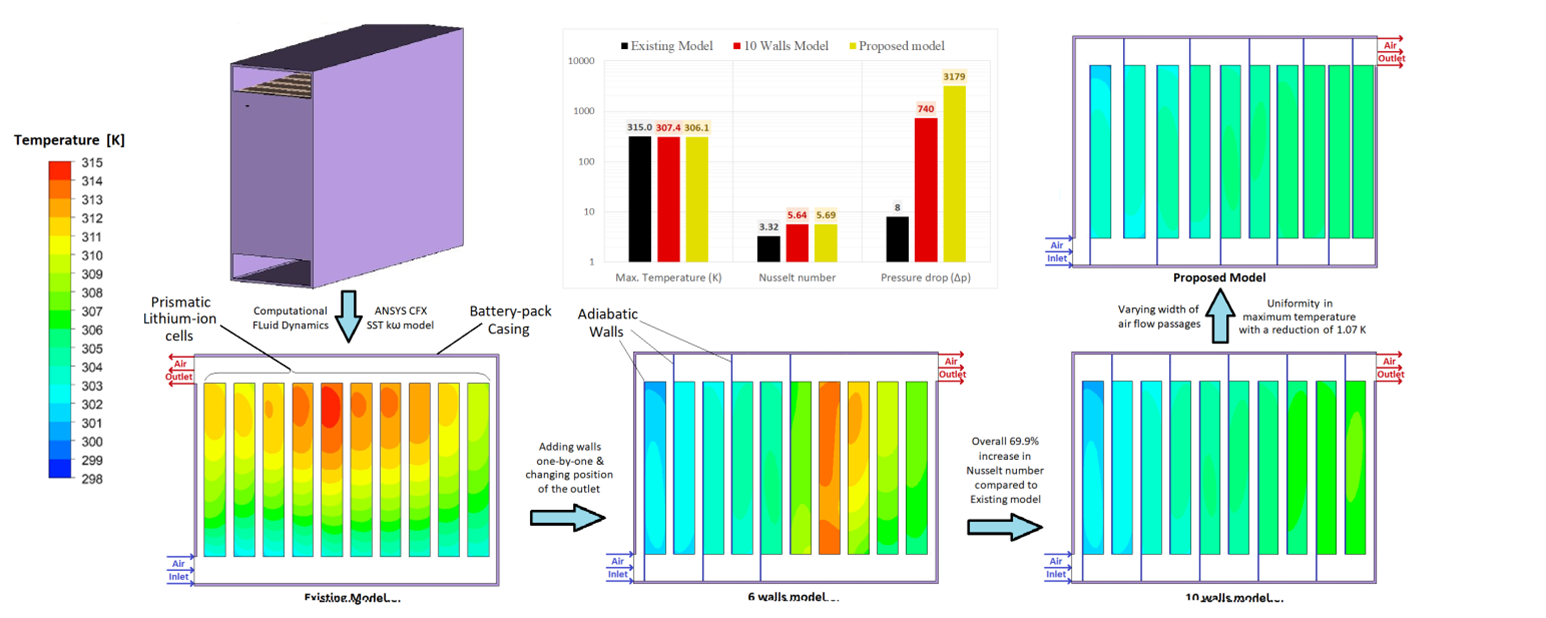Electric vehicles have come in picture nearly after 100 years after their first invention. This is due to the fact of power density capacity of these batteries having considerably increased after the invention of lithium ion batteries and lithium ion phosphate batteries. As a major threat to climatic change across the globe, the invention of lithium ion batteries and electric vehicles have given a new way at greener way of transportation. It is quite evident from the scientific research held across the world, lithium ion batteries can perform efficiently when its operating temperature is maintained between 15°C and 35°C. European and western countries find their temperature well nearer to 0°C during winter and Asian countries near the equator experiences as high as 45°C during the summer. Hence in order to develop a more efficient battery pack with almost no thermal fatigue, CFD has emerged as a promising tool in analyzing the three-dimensional fluid flow and heat transfer inside a typical lithium ion battery of an electric vehicle. A numerical case study has been carried out using CFD for the effective operation of lithium ion battery.
The active air cooling system of a lithium-ion battery-pack with 10 cells is improved through steady state computational fluid dynamics (CFD) investigation. The air outlet is shifted to the back face and adiabatic walls are gradually placed aside the batteries to guide the air flow over the battery surfaces. The 3D models were designed with Creo Parametric 5.0. The Reynold’s number at the inlet is 6369. ANSYS CFX 16.0 software package is used and the Shear Stress Transport (SST) turbulence model is chosen. The mass, momentum, and energy equations along with the transport equations for turbulence are solved. Adding walls beside all the 10 batteries increases the overall heat transfer coefficient, Nusselt number and Colburn j factor by 69.9%. Placement of the walls adjacent to the front faces of the batteries as opposed to the back faces is found to lower the pressure drop in the flow without affecting the heat transfer characteristics by much. Maximum surface temperature of all the batteries is made uniform by varying the distance between the batteries at the cost of pressure losses due to the flow. The project has been funded by Royal Academy of Engineering, Newton funds UK, through Industry academic partnership program 18-19/154 entitled, “Design and development of a four-wheeled electric vehicle for research, teaching and outreach in Tamil Nadu, India.

